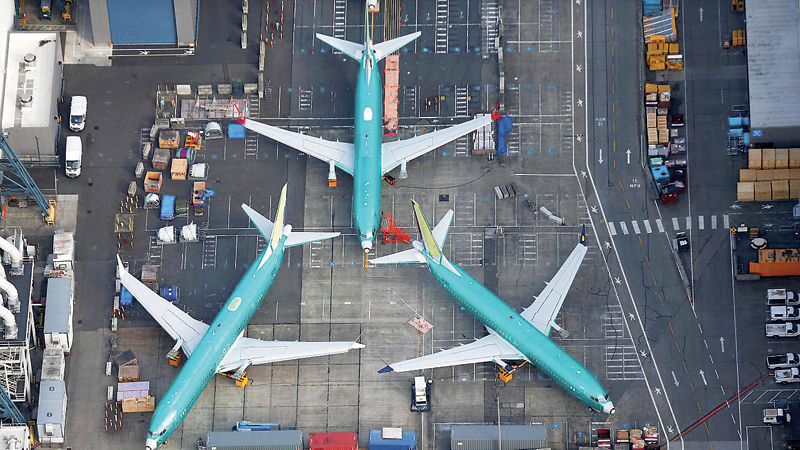

MONTREAL/CHICAGO: Global regulators are looking at “startle factors” that can overwhelm pilots as they consider revised protocols for the Boeing 737 MAX, Nicholas Robinson, the head of civil aviation for Transport Canada said.
Boeing Co’s fastest-selling jetliner, the 737 MAX, was grounded worldwide in March after two fatal crashes that killed a total of 346 people within five months.
Pilot overload appears to have played a role in both crashes, in which crews struggled to regain control of the airplane while a new flight control system repeatedly pushed the nose down amid a series of other audio and sensory alarms and alerts. “What we need to do is ensure that the aircrew in the MAX are able to handle that environment,” Robinson said.
Transport Canada is among a core group of regulators that is evaluating the requirements for the 737 MAX to fly again after a seven-month grounding.
It has been convening weekly by phone, video conferences or face-to-face with the US Federal Aviation Administration and its counterparts in the European Union and Brazil, Robinson said.
Their decisions could lead to sweeping changes to pilot flight operating manuals and classroom instruction and even mandates for costly simulator training, industry sources have said.
However, no training decisions can be made until Boeing submits software updates to the FAA for review and approval, Robinson said.
Transport Canada is closely aligned with the European Union Aviation Safety Agency on return to service demands and has also raised questions over the architecture behind the 737 MAX’s angle of attack system.
“We continue to look for a solution proposed by the manufacturer and the FAA on that area,” he said.
Still, Canada’s goal is for the MAX to return in countries across the globe simultaneously, or at least in close succession.
“It’s not a necessity, but it’s a goal,” Robinson said.
A startle or surprise in the cockpit can endanger a pilot’s ability to maintain control of the aircraft and was said to play a role in earlier air crashes like Air France flight 447 in 2009.
The same year, Chesley “Sully” Sullenberger safely landed a US Airways flight on the Hudson River in New York after a bird strike disabled the engines. He told lawmakers in June that the 737 MAX crew could have been confused as they struggled to maintain control of the aircraft.
“I can tell you firsthand that the startle factor is real and it’s huge. It absolutely interferes with one’s ability to quickly analyse the crisis and take corrective action,” Sullenberger said.
Under new simulator scenarios, 737 MAX pilots worldwide may be trained on runaway stabiliser, a loss of control that was triggered in both 737 MAX crashes, coupled with some kind of malfunction. — Reuters
Oman Observer is now on the WhatsApp channel. Click here



